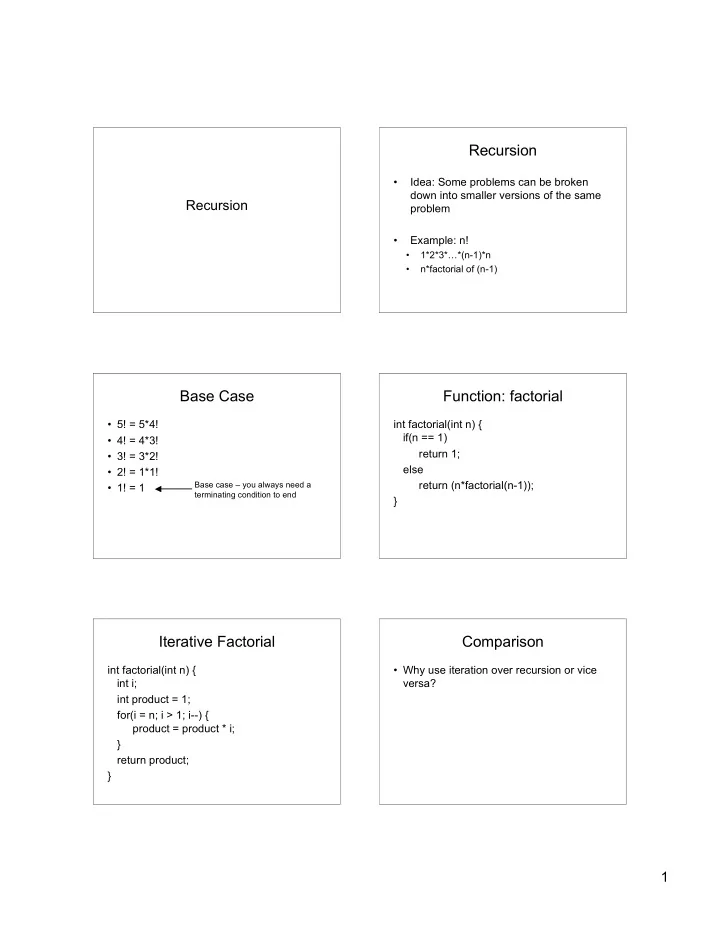

Recursion • Idea: Some problems can be broken down into smaller versions of the same Recursion problem • Example: n! • 1*2*3*…*(n-1)*n • n*factorial of (n-1) Base Case Function: factorial • 5! = 5*4! int factorial(int n) { if(n == 1) • 4! = 4*3! return 1; • 3! = 3*2! else • 2! = 1*1! return (n*factorial(n-1)); Base case – you always need a • 1! = 1 terminating condition to end } Iterative Factorial Comparison int factorial(int n) { • Why use iteration over recursion or vice int i; versa? int product = 1; for(i = n; i > 1; i--) { product = product * i; } return product; } 1
Linear Recursion Higher-Order Recursion • Algorithm makes more than one recursive • At most 1 recursive call at each iteration call – Example: Factorial • General algorithm • Binary recursion – Test for base cases – Halve the problem and make two recursive calls – Recurse • Make 1 recursive call – Example? • Should make progress toward the base case • Multiple recursion • Tail recursion – Algorithm makes many recursive calls – Recursive call is last operation – Example? – Can be easily converted to iterative Rules of Recursion Exercises 1. Base cases . You must always have some 1. Implement and test a method that uses bases cases, which can be solved without tail recursion to convert an array of recursion. integers into their absolute values. 2. Making progress. For the cases that are to be solved recursively, the recursive call must always be to a case that makes progress toward a base case. 3. Design rule. Assume that all the recursive calls work. 4. Compound interest rule. Never duplicate work by solving the same instance of a problem in separate recursive calls. Towers of Hanoi Examples • Three pegs and a set of disks • Design a binary recursive method for finding an element X in a sorted array A. • Goal: move all disks from peg 1 to peg 3 • Design a recursive method for printing all • Rules: permutations of a given string. – move 1 disk at a time – a larger disk cannot be placed on top of a smaller disk – all disks must be on some peg except the disk in-transit 2
Exercises 1. Design a recursive program to produce the following output: 0 0 1 0 1 2 0 1 2 3 0 1 2 3 4 0 1 2 3 0 1 2 0 1 0 3
Recommend
More recommend